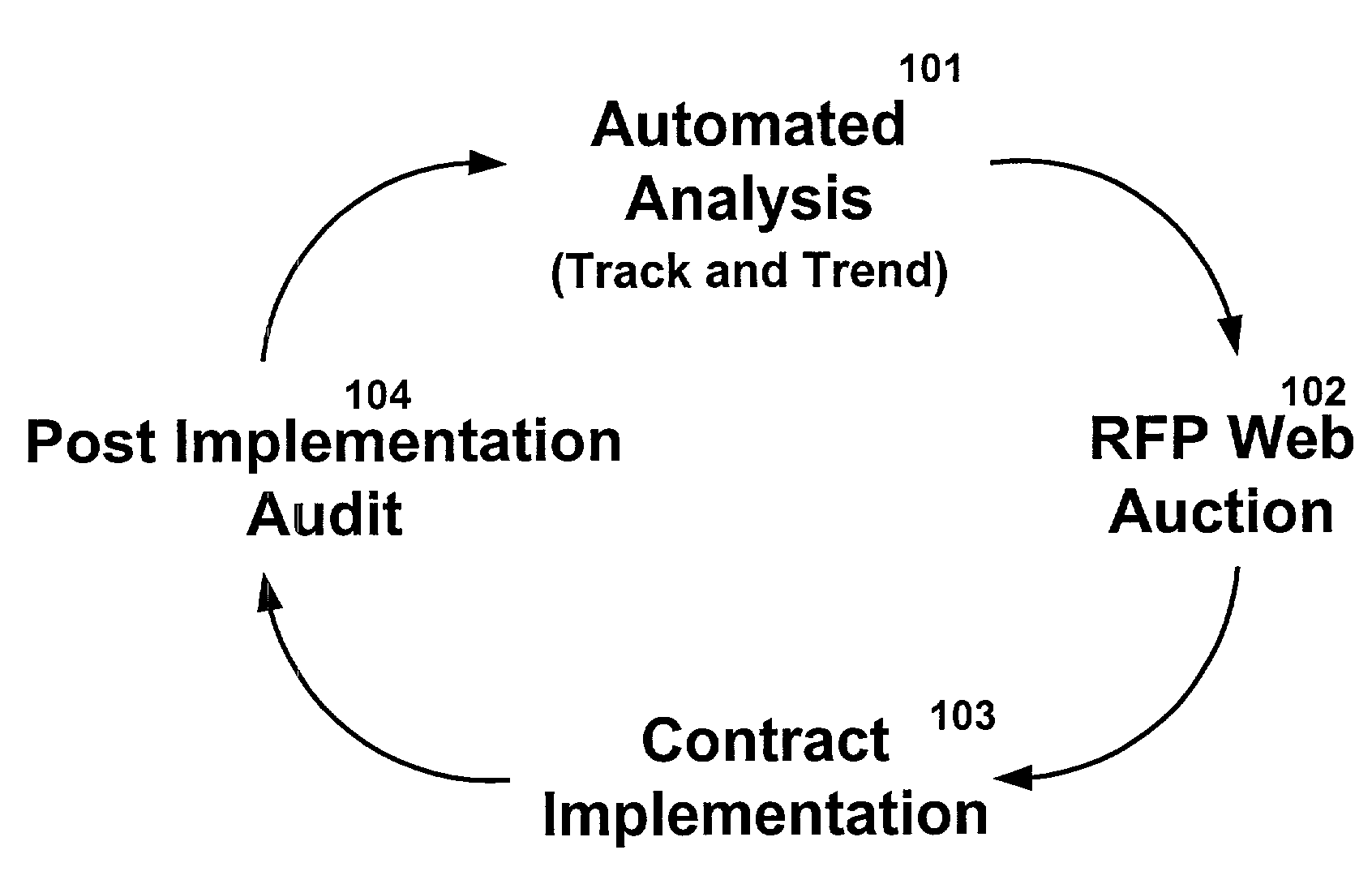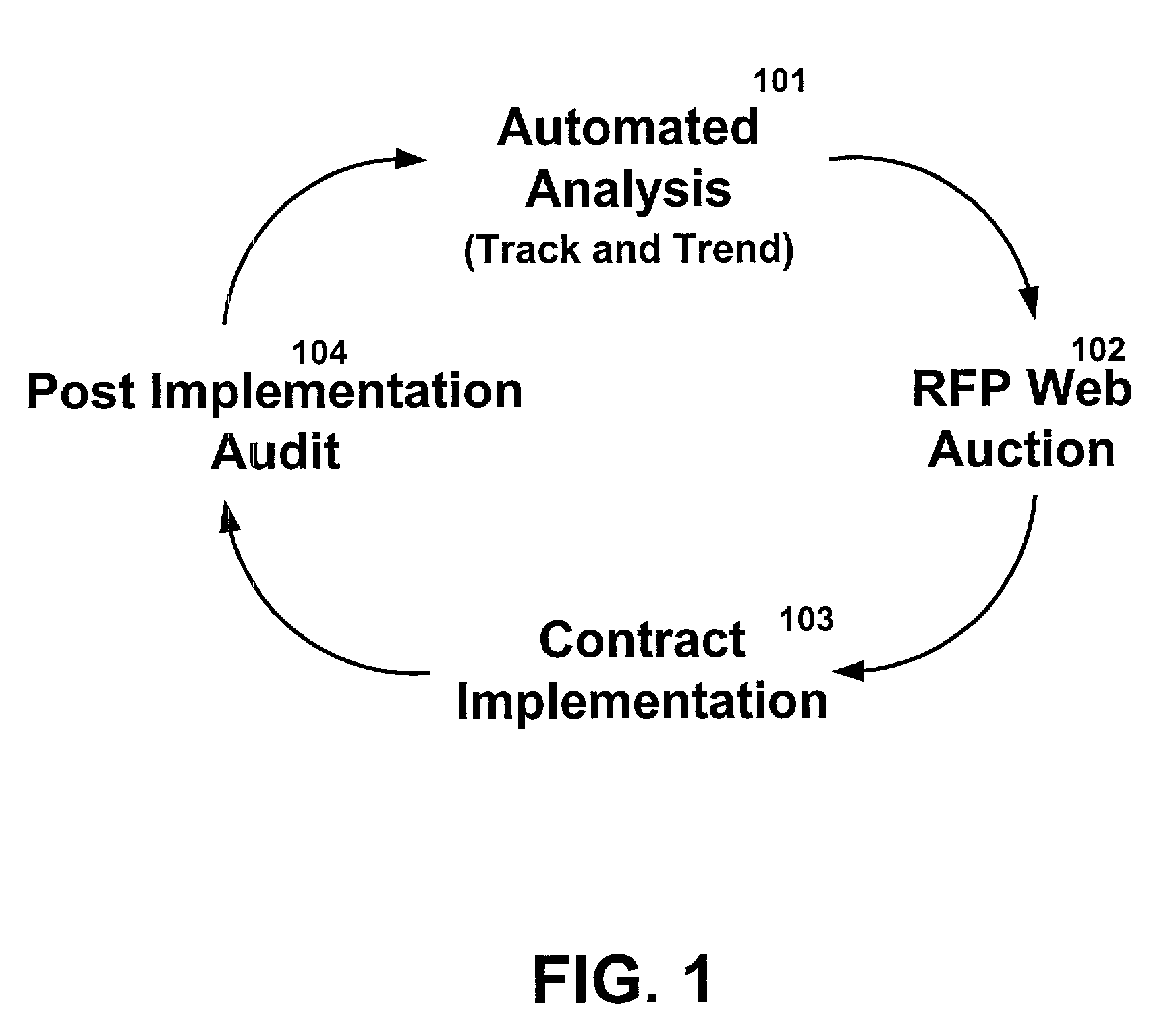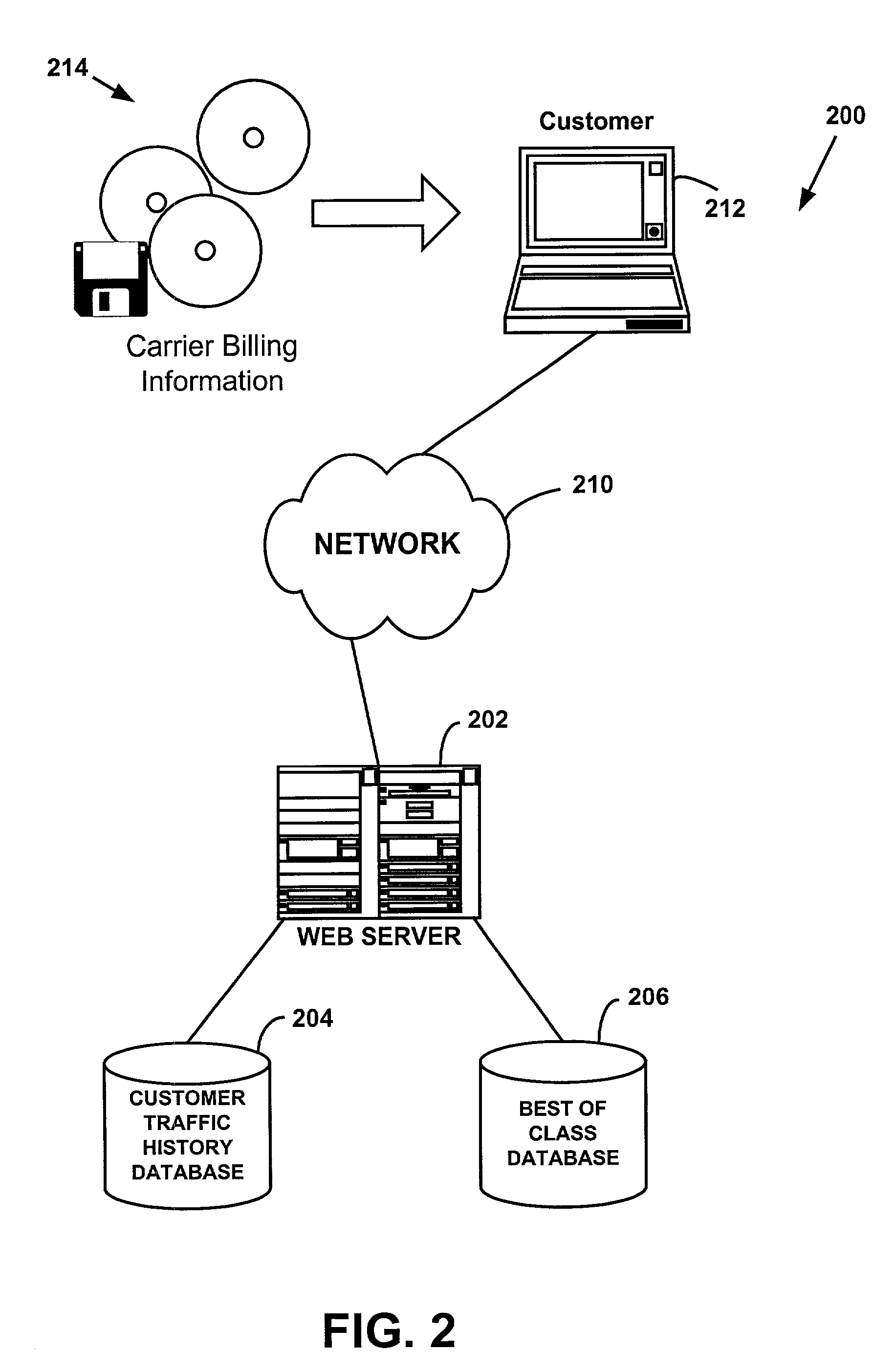Network reverse auction and spending analysis methods
a network reverse auction and analysis method technology, applied in the field of network reverse auction and spending analysis methods, can solve the problems of burdensome analysis of telecommunications billing statements, too burdensome for an analyst to track all telecommunications traffic, difficult to compare competitor rates, etc., to offset projected usage deficits, less effort and expense, and avoid significant penalties
- Summary
- Abstract
- Description
- Claims
- Application Information
AI Technical Summary
Benefits of technology
Problems solved by technology
Method used
Image
Examples
Embodiment Construction
[0026]FIG. 1 is a diagram illustrating a telecommunications contracting life cycle in accordance with the present invention. With reference to FIG. 1, a telecommunications customer first analyzes its spending 101 using an automated telecommunications spending analysis system 200 (FIG. 2). The customer puts its traffic up for bid, when desired, by preparing a request for proposals (RFP) and soliciting bids from interested vendors in a reverse auction environment 102. In the preferred embodiment, described in detail below, the reverse auction environment is implemented for remote access via the Internet using a web browser. Once the RFP web auction is complete, the customer selects a vendor and implements a contract 103. Following contract implementation, the customer audits bills for compliance with the contract terms 104. Thereafter, the customer completes the telecommunications contracting life cycle by resuming automated analysis of its spending.
Spending Analysis System
[0027]FIG. ...
PUM
 Login to View More
Login to View More Abstract
Description
Claims
Application Information
 Login to View More
Login to View More - R&D
- Intellectual Property
- Life Sciences
- Materials
- Tech Scout
- Unparalleled Data Quality
- Higher Quality Content
- 60% Fewer Hallucinations
Browse by: Latest US Patents, China's latest patents, Technical Efficacy Thesaurus, Application Domain, Technology Topic, Popular Technical Reports.
© 2025 PatSnap. All rights reserved.Legal|Privacy policy|Modern Slavery Act Transparency Statement|Sitemap|About US| Contact US: help@patsnap.com



